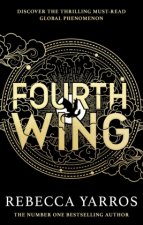
Kód: 13509473
Gender relations in "Much Ado About Nothing" and "Othello". How does genre make a difference?
Autor Martin Boddenberg
Master's Thesis from the year 2016 in the subject English - Literature, Works, grade: 2,5, Humboldt-University of Berlin (Institut für Anglistik und Amerikanistik), language: English, abstract: I want to start my thesis by briefly ... celý popis
- Jazyk:
 Angličtina
Angličtina - Väzba: Brožovaná
- Počet strán: 60
Nakladateľ: Grin Publishing, 2016
- Viac informácií o knihe

Mohlo by sa vám tiež páčiť
-

The Early Bird
13.31 € -

Canciones
9.52 €
Darujte túto knihu ešte dnes
- Objednajte knihu a vyberte Zaslať ako darček.
- Obratom obdržíte darovací poukaz na knihu, ktorý môžete ihneď odovzdať obdarovanému.
- Knihu zašleme na adresu obdarovaného, o nič sa nestaráte.
Viac informácií o knihe Gender relations in "Much Ado About Nothing" and "Othello". How does genre make a difference?
Nákupom získate 144 bodov
 Anotácia knihy
Anotácia knihy
Master's Thesis from the year 2016 in the subject English - Literature, Works, grade: 2,5, Humboldt-University of Berlin (Institut für Anglistik und Amerikanistik), language: English, abstract: I want to start my thesis by briefly discussing one of the seminal works on historical gender studies, Thomas Laqueur's "Making Sex". He argues that based on the publications of an old Greek physician named Galen, women and men were regarded as the same sex in Europe for about 2,000 years from the second century AD to circa 1800. He claims that male and female genitals were depicted and regarded as the same, with the only difference that the female genitalia were inside whereas the male genitalia were outside. Men and women were supposed to be different in degree but not in kind. Women were considered an imperfect version of men, since they were cooler, wetter, and more passive. Thus, the supposed sameness of the physical characteristics of men and women did by no means promise equality of the sexes; on the contrary, it underpinned the hierarchy and male superiority. Furthermore, women stood for fleshiness and desire. The connection of passiveness and desire as female traits seems controversial but is typical of the time. The idea of lustful, desirous, and uncontrollable women changed quite a lot later, especially in the 19th century, when women were usually supposed to have no or a very low sexual drive. Although we also find "the fallen woman" in 18th and 19th century literature, who is unable to control her sexual passion. The concept of a promiscuous female sexuality in Shakespeare's time might seem a bit odd to us today, but if we look at the plays, we find exactly this idea of women being lustful and uncontrollable for men. Laqueur claims that "Sometime in the eighteenth century, sex as we know it was invented". This means that Shakespeare's contemporaries would still have had an ancient understanding of sex (or gender) differences. Although the concept of gender was not yet developed in Shakespeare's time, I believe it is useful and justifiable to talk about gender relations. It is inevitable to take a modern perspective, and the concept of gender is not restricted to men and women of the 20th and 21st centuries; it is definitely applicable to Shakespeare's characters, too, as I will try to show in this thesis.
 Parametre knihy
Parametre knihy
58.27 €
- Celý názov: Gender relations in "Much Ado About Nothing" and "Othello". How does genre make a difference?
- Autor: Martin Boddenberg
- Jazyk:
 Angličtina
Angličtina - Väzba: Brožovaná
- Počet strán: 60
- EAN: 9783668241817
- ISBN: 3668241813
- ID: 13509473
- Nakladateľ: Grin Publishing
- Hmotnosť: 100 g
- Rozmery: 210 × 148 × 4 mm
- Dátum vydania: 29. June 2016
Obľúbené z iného súdka
-

Berserk Deluxe Volume 1
48.34 € -5 % -

Haunting Adeline
30.82 € -

Berserk Deluxe Volume 3
51.72 € -

Berserk Deluxe Volume 2
52.95 € -

LEGO Star Wars Visual Dictionary Updated Edition
23.34 € -9 % -

Atomic Habits
15.97 € -15 % -

Powerless
11.97 € -8 % -

Chainsaw Man, Vol. 15
10.44 € -23 % -

Harry Potter and the Prisoner of Azkaban (Minalima Edition)
41.68 € -

House of Leaves
23.45 € -22 % -

Berserk Deluxe Volume 5
52.33 € -

Hunting Adeline
31.84 € -

Cry Baby Coloring Book
11.46 € -

Iron Flame
16.28 € -19 % -

White Nights
3.57 € -24 % -

The Official Stardew Valley Cookbook
28.16 € -3 % -

JUJUTSU KAISEN V22
12.49 € -7 % -

Gravity Falls Journal 3
20.68 € -5 % -

Heaven Official's Blessing: Tian Guan Ci Fu (Novel) Vol. 2
22.11 € -

Twisted Lies
9.82 € -24 % -

Berserk Deluxe Volume 4
48.23 € -5 % -

Surrounded by Idiots
10.74 € -11 % -

Berserk Deluxe Volume 6
51.20 € -

Dune Messiah
9 € -21 % -

The 48 Laws of Power
26.11 € -4 % -

Twisted Love
10.13 € -16 % -

Bungo Stray Dogs, Vol. 8 (light novel)
16.58 € -

Fourth Wing
10.23 € -15 % -

Dune
9.72 € -19 % -

Twisted Games
9.82 € -24 % -

Heaven Official's Blessing: Tian Guan Ci Fu (Novel) Vol. 1
20.68 € -5 % -

A Little Life
17.50 € -

CHAINSAW MAN V14
11.26 € -14 % -

Court of Thorns and Roses Paperback Box Set (5 books)
54.58 € -13 % -

Berserk Deluxe Volume 10
58.99 € -

King of Sloth
10.74 € -17 % -

Raising Mentally Strong Kids: How to Combine the Power of Neuroscience with Love and Logic to Grow Confident, Kind, Responsible, and Resilient Child
29.90 € -

Vagabond (VIZBIG Edition), Vol. 1
24.57 € -4 % -

48 Laws Of Power
18.12 € -10 % -

Court of Mist and Fury
9.41 € -21 % -

Court of Thorns and Roses
9.31 € -20 % -

The Husky and His White Cat Shizun: Erha He Ta de Bai Mao Shizun (Novel) Vol. 5
20.27 € -4 % -

No Longer Human
16.58 € -

Heaven Official's Blessing: Tian Guan Ci Fu Vol. 4
18.73 € -10 % -

Twisted Series 4-Book Boxed Set
38.81 € -23 % -

Throne of Glass Box Set (Paperback)
95.15 € -15 % -

Powerful
11.36 € -13 % -

Dead Poets Society
10.54 € -

A Court of Silver Flames
10.13 € -22 %
Osobný odber Bratislava a 2642 dalších
Copyright ©2008-24 najlacnejsie-knihy.sk Všetky práva vyhradenéSúkromieCookies



 21 miliónov titulov
21 miliónov titulov Vrátenie do mesiaca
Vrátenie do mesiaca 02/210 210 99 (8-15.30h)
02/210 210 99 (8-15.30h)